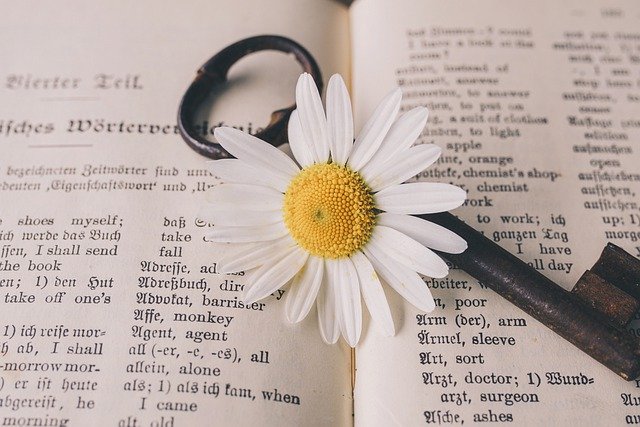Book of chivalry: what is it, definition, characteristics, origin and structure
Contents
What is the book of chivalry?
Also known as novel of chivalry, a term used more recently, it is one of the most important and historically representative sub-genres of the epic genre, especially developed in Spain, France, the Italian peninsula and Portugal, towards the end of the 15th century AD.

This type of work focuses on the exploits of a knight, narrating the stories with an open structure that reveals the concern for the constant search for courage and honor through the obstacles and conflictive situations that the hero must face throughout his adventures. Its form of composition and the themes it deals with, will allow it to develop into another series of contents.
Meaning of the sub-genre of the chivalry book
The term -chivalry book- was used by many writers during the Golden Age, among them fundamental writers for Literature such as Cervantes. However, many experts mention that -libros- does not make any particular reference, and that -caballerías-, can easily be confused because it contains elements of a different nature.
Ultimately, the term refers to a type of novel that does not pertain to chivalry in particular as a military grouping, but to popular events of knights within the book. It is now considered that the term should not be used.
Definition of the sub-genre chivalry book
The term is used to define a type of work written in prose that narrates the adventures of a hero in search of his particular honor, where the idealization of love and the importance of the hero for exposing his courage and bravery for a particular people or context is evidenced.
History and origin of the book of chivalry as a subgenre
It is considered that the first place where the book of chivalry appears is Castile, however, it soon began to spread to other areas such as Galicia and Portugal, where it had an important development due especially to the lyrical character of the region in which the subgenre was the precise format for literary expression.
However, in its beginnings the book of chivalry will be involved in several discussions because it was considered an implausible type of work and of high immoral content due to the manifestations that are developed within the plot. Despite being qualified as works whose readers lacked a good education, they were of great interest to many members of the cultural and social classes, so that the writing of works such as these is prolonged.
Later, during the Golden Age, Spanish works of chivalry books were published to give a green light to creations that, until then, were little known. It is important to mention that the book of chivalry is developed mainly during the medieval period in Spain, but essentially it would be in the Renaissance where it could flourish with power. In fact, it is considered to have had a great influence within literature until modernity, evidencing presence within the novel, especially.
Characteristics of the book of chivalry
Let us now turn to a series of key aspects to understand in depth the dimensions of this epic subgenre:
Theme
One of the key characteristics of this subgenre has to do with a constant quest related to courage and honor, which develops during the story told by the book of chivalry. The hero goes through different situations that are presented to him along the way in which he must achieve for himself his own honor by demonstrating his courage, which is why he becomes the main stimulus for action, based on the love and recognition that he will receive for his family, a certain region, his own people, etc.
Hero
He is the protagonist of the book of chivalry who embodies the prototype of heroism in which the ideal of being is reflected, as a knight, properly, with an impeccable execution of decisions that, in addition, seeks his recognition and fame from the combats and overcoming the obstacles that are presented to him along the way.
Love
Another important aspect that appears in this subgenre is love, but it owes its importance precisely to the idealization that revolves around this feeling that emerges from the knight for his lady. It is about courtly love, where elements such as idolatry converge, but also other aspects such as relationships outside marriage and that love conceived from the beginning that usually ends with the union of lovers.
Violence
In this case, combats appear frequently as a means through which the superior value is achieved, therefore, violence will be present in duels, battles with fantastic beings, tournaments, among other situations.
Time
Particularly, in the book of chivalry, time does not have a specific reference that allows identifying the moment from the circumstances or historical conditions.
Fantastic space
The journeys made by the characters, especially the heroes, have as their destination distant towns or places that are touched by fantasy, so that they can be lands of giants, for example, as well as enchanted areas within nature, palaces of magical beings, jungles, forests and mysterious spaces, among others.

Structure of the book of chivalry
One of the most important factors of this subgenre has to do with the qualities of its structure, since it consists of an open structure despite being a subgenre considered very closed, since it maintains an open narrative of episodic character that describes the adventures, which can take an indefinite time. In fact, the culmination of each work initiates other adventures that will be executed, this time, by the children of the hero of the story.
This is how the episodic nature of the events becomes evident, giving way to the continuation from a moment established by the author.
Authors and most important works of the Book of Chivalry
One of the most important works of the book of chivalry is called The Four Books of Amadis de Gaula, whose date is believed to be from the 14th century A.D. There are also other works such as Florisando, written by Ruy Paez de Ribera, as well as Lisuarte de Grecia, written by Juan de Diaz, and works such as Florisel de Niquea, Rogel de Grecia and Lisuarte de Grecia, which were written by Feliciano de Silva.
Later, other works known as cycles will appear, among which are Clarián de Landanís, the Espejo de Príncipes y Caballeros (Mirror of Princes and Knights), among others. On the other hand, there are those who consider that El Ingenioso Hidalgo Don Quijote de la Mancha is part of the sub-genre of the book of chivalry, especially because of the burlesque overtones and the adventures of the two main characters.
Example of a chivalry book
The following is an excerpt from The Four Books of Amadís de Gaula, one of the most important and representative works of the epic subgenre: “Well, this king Garinter, being at a very advanced age, sometimes went to the mountains and hunting to rest his mind. Among which, going out one day from a village called Alima, being diverted from the armies and hunters walking through the forest his hours praying, he saw to his left a fierce battle of a single knight who fought with two, he knew the two knights who were his vassals, who were very proud and bad manners and very related, many angers had received from them. But he who was fighting with them could not know them and not trusting so much in the goodness of the one that the fear of the two was removed, turning away from them he watched the battle, at the end of which by the hand of the one of the two they were defeated and killed”.
